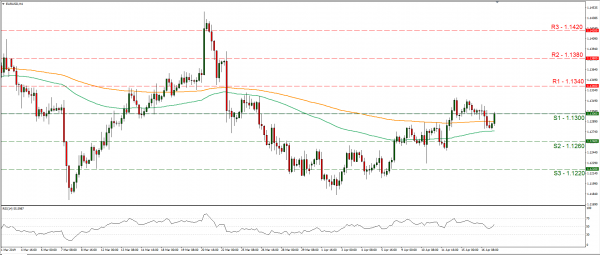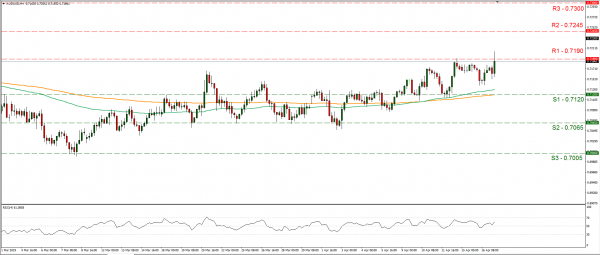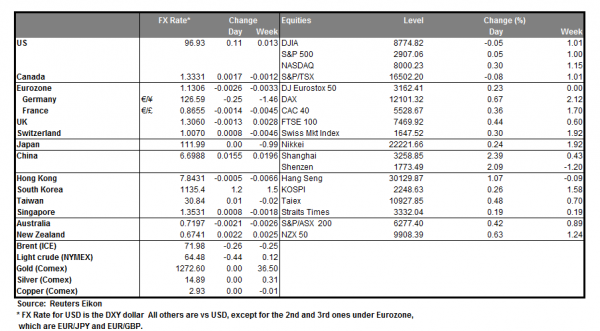The AUD strengthened during today’s Asian session as a number of Chinese data came out better than expected. Starting with the GDP growth rate for Q1 which seems to be stabilising at +6.4% yoy, while it was projected to slowdown and the industrial output which accelerated substantially reaching +8.5% yoy, could be interpreted as signals of stabilization for the Chinese economy. China’s National Bureau of statistics commented that consumption is the main driving force behind the improvement, however at the same time noted that many external uncertainties exist as global growth slows down. Please note that the NZD marked a similar reaction as the AUD, despite the bearish hit after the release of a slowing CPI rate for Q1. Overall, the picture of the Chinese economy seems to be bottoming out and should the US-Sino negotiations bear fruit any time soon, we may see it picking up pace once again. Also it should be mentioned that tomorrow’s release of the Australian employment data for March are expected to affect the Aussies direction as the RBA is placing substantial weight on unemployment recently. AUD/USD rose during today’s Asian session, temporarily breaking the 0.7190 (R1) resistance line. We could see the pair having some bullish tendencies during today’s session, yet we expect the release of the Australian employment data, tomorrow during the Asian session, to affect the pair’s direction. Should the pair find fresh buying orders along its path, we could see it breaking the 0.7190 (R1) resistance line and aim for the 0.7245 (R2) resistance hurdle. On the flip side, should the pair come under the selling interest of the market, we could see it breaking the 0.7120 (S1) support line and aim for the 0.7065 (S2) support barrier.
EUR weakens on dovish comments by ECB members
The common currency weakened against the USD during the European session yesterday however recovered some of its losses later. The drop seems to have been caused by dovish comments made by a number of ECB’s policymakers characterized as a “significant minority” in a Reuters report. The report stated that ECB policy makers consider the bank’s economic forecasts as too optimistic and that the possibility of a growth recovery for the area in the second half of 2019 is doubtful. We could consider the EUR’s reaction as another sign of sensitivity for the common currency and definitely a dovish take, despite the EUR later rebounding. We expect the release of the April preliminary PMI’s of the area on Thursday, to be closely watched as it could provide further signals about growth. EUR/USD weakened during the European session yesterday breaking the 1.1300 (S1) support line, however corrected during today’s Asian session regaining most of its losses and breaking just above the prementioned support line. Should the bulls dictate the pair’s direction, we could see it breaking the 1.1340 (R1) resistance line. On the other hand should the bears take over once again, we could see it breaking the 1.1300 (S1) support line and aim if not break the 1.1260 (S2) support level.
Other economic highlights, today and early tomorrow
In today’s European session, we get UK’s inflation rates for March and Eurozone’s final reading of the CPI rate for March. In the American session, we get Canada’s inflation rates for March and from the US the EIA weekly crude oil inventories figure. As for speakers, please note that BoE’s Governor Mar Carney, ECB’s Sabine Lautenschlager, Philadelphia Fed President Patrick Harker and St. Louis Fed President James Bullard. Also please note that the Fed’s Beige Book is to be released later during the American session.
Support: 1.1300 (S1), 1.1260 (S2), 1.1220 (S3)
Resistance: 1.1340 (R1), 1.1380 (R2), 1.1420 (R3)
Support: 0.7120 (S1), 0.7065 (S2), 0.7005 (S3)
Resistance: 0.7190 (R1), 0.7245 (R2), 0.7300 (R3)


















